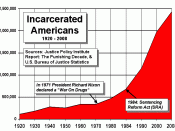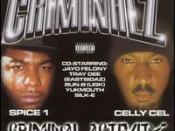During the 1960' s and 1970's attempts to explain and understand social deviance, in particular juvenile delinquency, in terms of distinctive cultural patterns became commonplace. Sociologists in a pseudo scientific manner tried to divide up the population into parent class cultures, various subcultures and counter-cultures and analyse their distinctive norms, values and beliefs. Since the earliest days of gang research, such as the classic study by Thrasher (1927) of 1,313 gangs in Chicago, scholars have noted the disproportionate contribution that gang members make to the level of crime in society. Their involvement in serious and violent delinquency is one of the most robust observations in criminological research . The use of the term 'subculture' in the context of this essay focuses mainly on juvenile delinquent gangs. I shall attempt to argue the relevance/ irrelevance of subcultural theories of crime from inception in the 1950/60's and assess it's development and relevance to date.
Defining and contextualising subcultural theories of crime
The concept of subculture was applied to the study of delinquency in the mid 1950's and was first used by anthropologists. It referred to a distinctive sets of values that set the delinquent apart from mainstream or dominant culture. It attempted to bring coherency to the argument that delinquency and gang formation was a solution to the structural and cultural problems that faced marginalised groups. A gang is a form of subculture and does not have a set definition. Broadly speaking the term implies some form of identifiable leadership, membership criteria and organisational structure. Contemporary and classic subcultural studies of white, black, Chinese and Puerto Rican gangs in America paint a picture of neighbourhood groups, organised largely along racial lines, with a strong sense of local territory, mutual obligations and often direct involvement in extortion, trafficking and the drugs trade.


